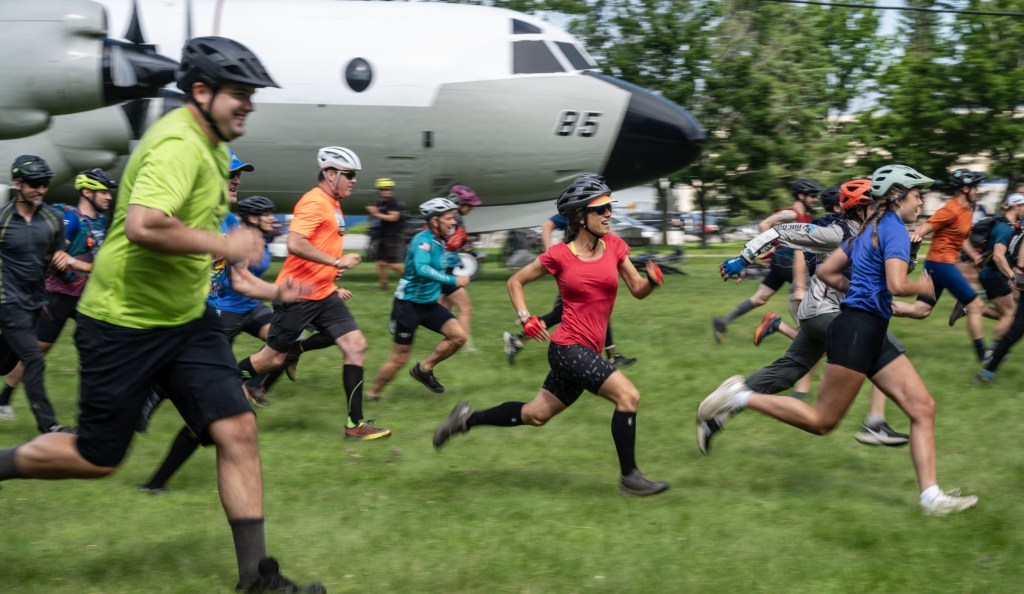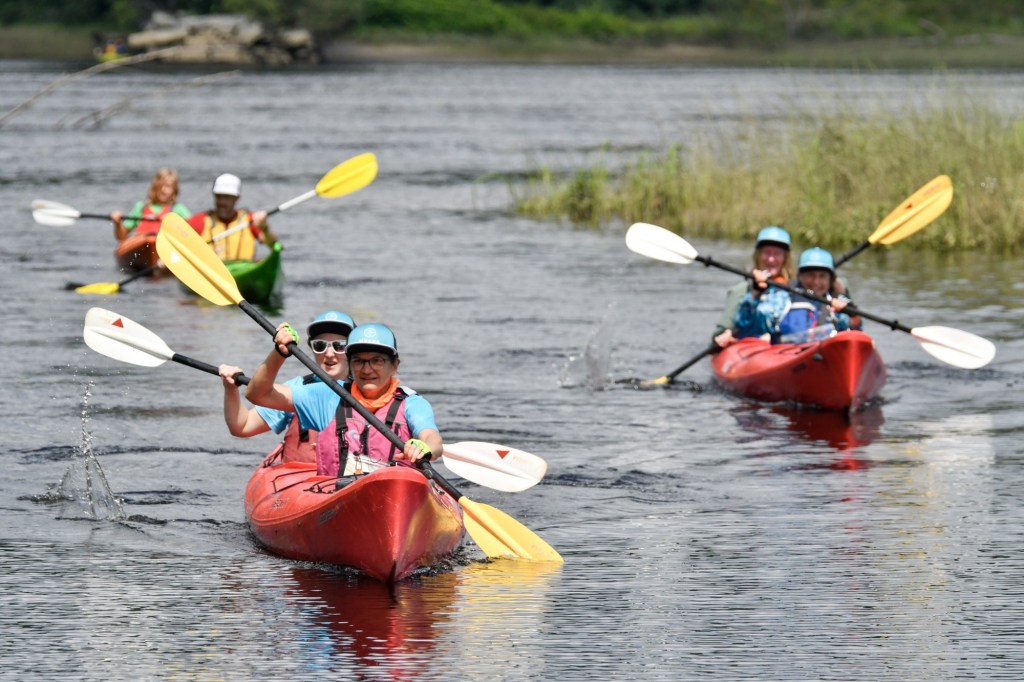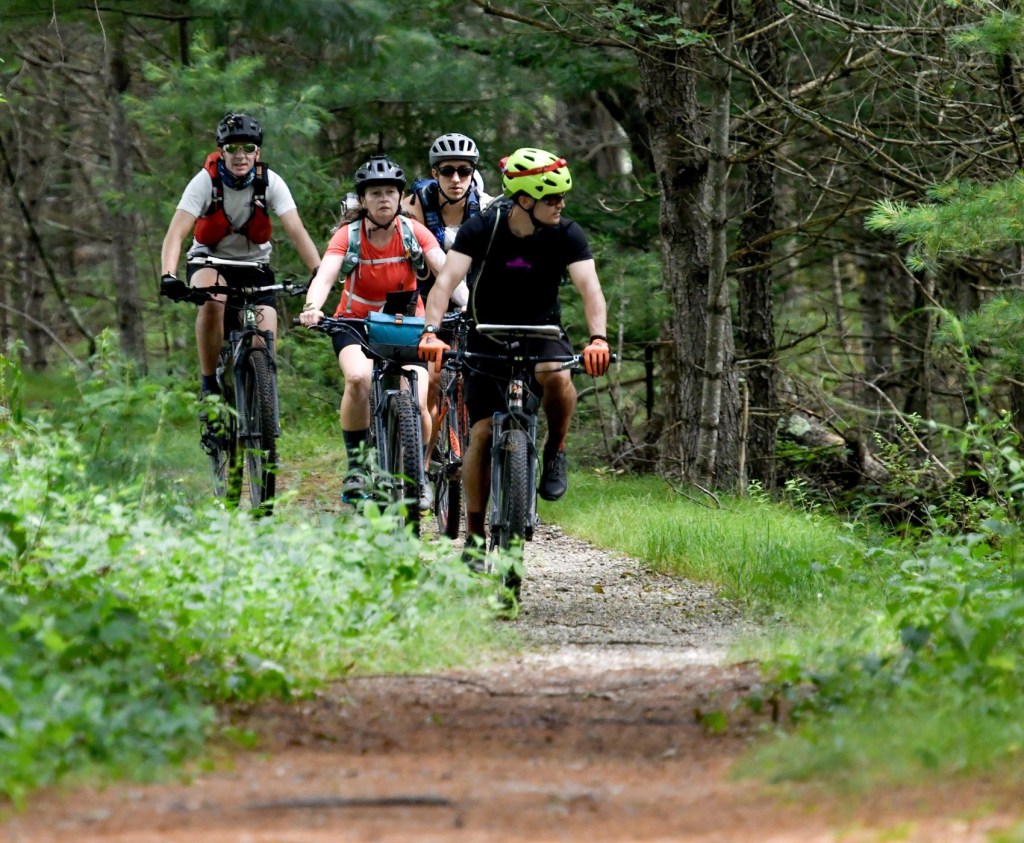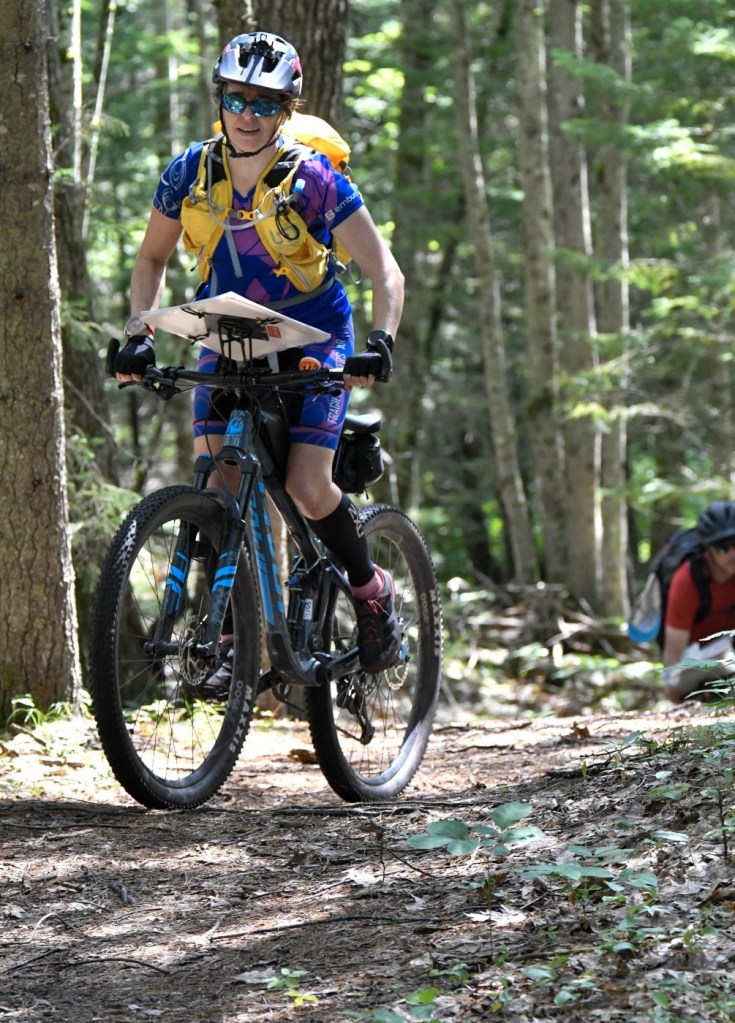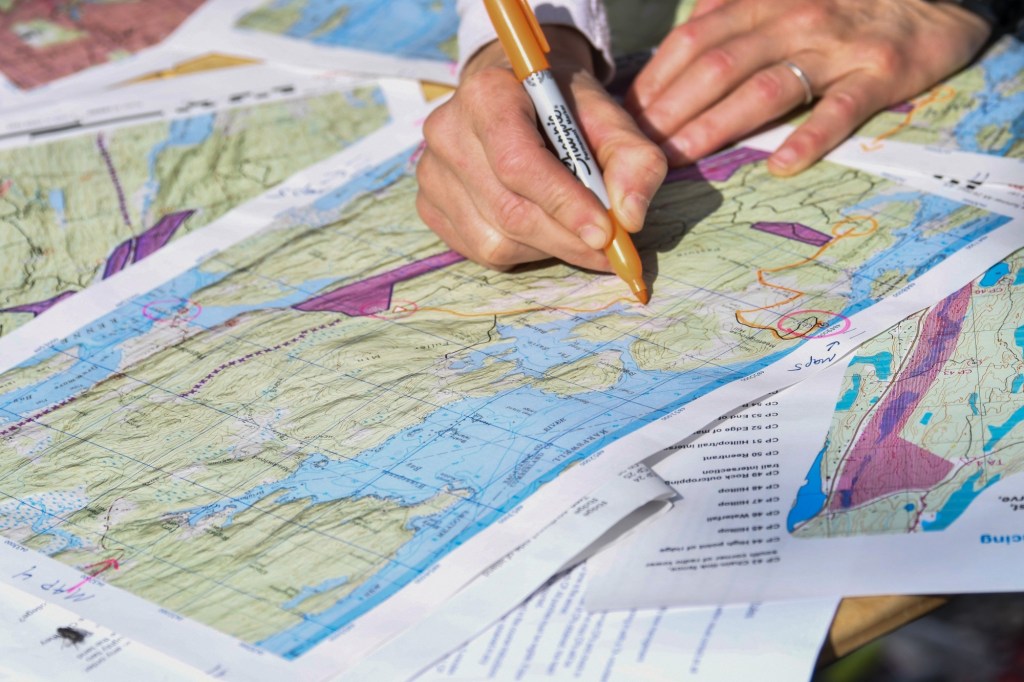BRUNSWICK — It’s tough for anything but the massive P-3 Orion jet parked on an old U.S. Naval base to dominate the landscape in this area of town. This day, though, was different.
Built by Lockheed in the late 1950s, the aircraft was an anti-submarine patrol hunter that kept close watch on the seas. It was a fitting launch point for a weekend that requires some of the most adventurous in Maine and beyond to identify and master all sorts of terrain in a race that, though physically daunting, is just as challenging mentally.
Hundreds equipped with their kayaks, bikes and trekking poles descended on Brunswick on Saturday for this year’s Maine Summer Adventure Race. The competition pits roughly 40 teams against one another in a 24-hour race that requires meticulous planning while traversing a roughly 110-mile course.

Maine Summer Adventure Race competitors ride on the Neptune Woods mountain bike trails Saturday in Brunswick. Joe Phelan/Kennebec Journal
“There’s no easy part to it,” said Evan Moreshead, a competitor for Strong Machine Adventure Racing. “Every part is hard. You’re out there for 24 hours in the wilderness, and the course is big and wet. For a lot of that time, you’re in the dark when you’re tired.”
Beginning within sight of the airplane, the course takes competitors down the Androscoggin River into Merrymeeting Bay via sea kayak before taking them into Bath and Phippsburg via bike. There are then 24 hiking checkpoints in Phippsburg before the field heads back to Brunswick, where more biking and hiking checkpoints await.
Navigating that field requires excellent mental strength and orienteering capabilities, a skill that some competitors feel is even more critical than physical prowess. That was evident at benches and tables in the starting area, where those about to embark spent more time parsing the map than they did doing warmup exercises.
“It’s a big course, but it’s fun to plan out,” said Parker Eason of Team Lost & Furious. “I really like the way they set it up. It’s got some cool outlets; you’ve got a sand bridge to an island that you have to hit at low tide, you’ve got some historical markers, and you’ve got to read a memorial stone.”
With gathering the checkpoints, not crossing a finish line, the objective, the race takes on a different look than many other endurance competitions. Although teams want to collect as many flags as possible, they are allowed to skip certain checkpoints to pursue others.
Race organizer Kate White said she estimates it will take the winning team approximately 22 hours to complete the race, which began at 10 a.m. Saturday. She expects multiple teams in the field of 42 to “clear the course,” which is achieved by collecting all 69 checkpoints within the allotted time.
“I think you’ll see a few teams do that, but there will be a lot of the teams out there that won’t,” White said. “They’ll be making strategic choices of, ‘OK, are we going to go here, or are we going to go there? How much time do we have?’ So, for those teams, it’s all about which ones make the most sense.”

Maine Summer Adventure Race participants return to Bay Bridge Landing Wetland Park after paddling in the Androscoggin River on Saturday in Brunswick. Joe Phelan/Kennebec Journal
The toughest part comes roughly 10 hours into the race as the sun sets and gives way to hours of darkness. That darkness comes as the racers, having been active for an entire day, are at their most fatigued and can find themselves in major quandaries if they aren’t careful.
“Racing through the night is really a challenging experience for people,” White said. “They get pretty tired mentally, but also, you’re out in the dark, and it’s harder to navigate in the dark. That’s when you see teams have some of their low moments, and they have to use their teamwork to get through them.”
Preparation is key. In addition to being physically fit, racers need enough food and water to last 24 hours, and caffeine is also a big want to get them through the toughest moments. Then, there’s the equipment, which includes paddles, life jackets, bike helmets, flashlights, hiking gear and a change of clothes to take on the elements.
Too much gear, though, can weigh competitors down. Bob Abel, another Lost & Furious racer, said the team has packed lighter over the years, adding that the particularly scrupulous planning the team did in its early years of adventure racing proved to be overkill.
“The first race we did, we were very well prepared and had our food counted out to the exact calories, but we’re kind of winging it now,” Abel said. “I don’t use half the stuff in my pack, so I told myself, ‘I’m going to go super-light this time and just cram a bunch of food there.’”
Despite the team’s name, there’s not much to be furious about, Eason said, when it comes to being lost. Navigating through nature, whether on the plotted path or away from it, is what draws him and many others to adventure racing in the first place.
“Growing up, the fun part of being a kid was going through the woods at night and just getting lost,” Eason said. “That’s pretty much the same experience you get from this. It gives you that feeling again.”
Comments are not available on this story.
Send questions/comments to the editors.


